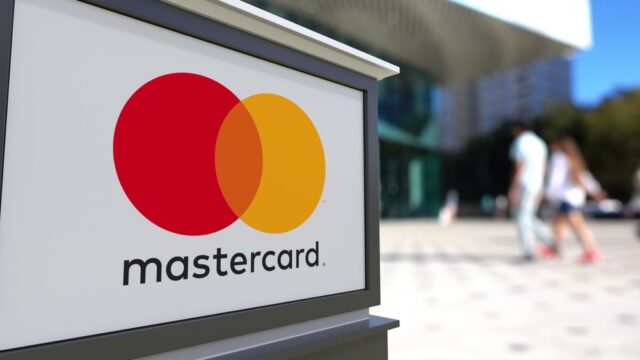Mastercard is reportedly in late-stage talks to acquire crypto-infrastructure firm zerohash for up to $2 billion. The deal could redefine how traditional payment giants plug into the stablecoin economy.
If confirmed, the zerohash acquisition would mark Mastercard’s boldest step yet toward integrating on-chain settlement and programmable payments into its existing network.
The move comes as stablecoin infrastructure acquisitions heat up across the fintech landscape. Stripe just snapped up Bridge for roughly $450 million, and Coinbase is said to be in exclusive talks for BVNK. For Mastercard, the bet isn’t about speculation. It wants to own the rails that digital money will run on.
An M&A Sprint for Stablecoin Infrastructure
A wave of consolidation is reshaping digital-asset infrastructure. Over the past six months, Stripe’s Bridge acquisition, Coinbase’s rumored BVNK deal, and Mastercard’s courtship of zerohash signaled an industry-wide shift. Whoever controls the stablecoin pipes controls the next generation of payments.
Interestingly, each deal targets a different layer. Bridge gives Stripe direct merchant-level access to crypto settlement. BVNK expands Coinbase’s cross-border corridors. Mastercard’s zerohash acquisition secures back-end control, ie. custody, issuance, and payouts, at enterprise scale.
Behind this arms race lies the same logic that fueled fintech’s early processor wars. Interchange is shrinking and cross-border friction persists. Corporate treasuries are moving toward tokenized cash for speed and transparency. Consequently, stablecoin infrastructure becomes the new competitive moat.
Why Zerohash Fits Mastercard
Founded in 2017, zerohash built an API-first infrastructure that lets banks, brokers, and fintechs offer digital-asset features without handling coins directly. Its platform covers issuance, trading, custody, and payouts. Effectively, it is a turnkey engine for stablecoin payments rails. Because the company is licensed to operate in 51 U.S. jurisdictions (all 50 states and Washington D.C.), it boasts one of the broadest regulatory footprints among crypto-native providers.
Zerohash already powers brokerage-level crypto products for Interactive Brokers, and a Morgan Stanley E*Trade integration is reportedly in the pipeline for 2026. That track record explains how Mastercard plans to use zerohash. It’s not just to add features to the Multi-Token Network (MTN) but to bring proven, compliant infrastructure into its enterprise ecosystem.
Where Mastercard’s MTN experiments with programmable payments, zerohash offers the operational layer to settle them; APIs, custody, and compliance. Together, they form the connective tissue between traditional card networks and the emerging world of tokenized money.
Competitors Raise the Stakes
Mastercard’s rivals are hardly standing still. Stripe’s Bridge acquisition focuses on merchant-side integration, allowing businesses to accept and pay out in stablecoins directly. Coinbase’s prospective BVNK buy targets the cross-border B2B segment, giving the exchange a foothold in fiat-on/off-ramp infrastructure for institutions.
In this context, Mastercard’s zerohash acquisition represents the missing puzzle piece. It grabs the large-scale, licensed infrastructure that connects regulated banks and brokerages to blockchain rails. The goal is to secure the back-end of stablecoin transactions, not just the front-end user flows.
These moves highlight a new layer of competition among giants. Stripe controls the merchant on-ramp; Coinbase is building treasury corridors; Mastercard aims to dominate the settlement stack. Visa’s absence from this round only fuels speculation about its next move.
Enterprise Adoption Moves Center Stage
While headlines focus on billion-dollar valuations, the real story is enterprise stablecoin adoption. Corporates increasingly want stablecoin-based settlement for payroll, cross-border payments, and instant merchant payouts. But they need it through regulated partners.
By merging its network with zerohash’s infrastructure, Mastercard could deliver precisely that. The impact of the Mastercard-zerohash deal on stablecoin markets would likely ripple through brokerage and banking clients already using the platform. Consequently, faster clearing, programmable settlement, and embedded compliance could make stablecoin payments as routine as card authorizations.
For fintechs, the deal signals that stablecoins are entering the “production” phase of finance. For Mastercard, it transforms an experiment into an enterprise service line.
Risks and Regulatory Hurdles
Most importantly, the deal isn’t finalized. Neither company has confirmed the negotiations, and sources emphasize talks could still collapse. Also, integration won’t be easy: combining crypto custody with Mastercard’s legacy settlement systems raises technical and compliance challenges.
Regulators are watching closely, too. Stablecoin infrastructure straddles money transmission, banking, and securities oversight. Mastercard will need to balance innovation against heightened scrutiny, especially after its 2023 CipherTrace compliance upgrades.
Yet even with these uncertainties, the rationale remains clear. Regulated crypto infrastructure is becoming a core payment-system component, not an experiment on the periphery.
>>> Read more: Western Union USDPT Stablecoin Launch
Owning the Rails of Programmable Money
If completed, Mastercard‘s zerohash acquisition would redefine what it means to be a payment network. It would do so in the age of blockchain. Mastercard isn’t chasing the next speculative boom; it’s buying programmable money infrastructure that will let fiat, stablecoins, and tokenized deposits move interchangeably.
In this new landscape, card processors evolve into settlement platforms, and APIs replace clearinghouses. The companies that once competed on interchange fees now compete on latency and liquidity, the raw materials of digital finance.
Stripe, Coinbase, and Mastercard are no longer fighting for merchants or users; they’re racing to own the invisible rails beneath them. And in the stablecoin arms race, that’s where the real power lies.
Readers’ frequently asked questions
What does Zerohash actually do for Mastercard?
Zerohash supplies licensed, API-based infrastructure so banks, brokers, and fintechs can offer stablecoin and digital-asset features without holding crypto directly. For Mastercard, this means ready-made rails for issuance, custody, and settlement that can plug into its Multi-Token Network (MTN) to support on-chain payments.
Why are stablecoin infrastructure acquisitions becoming so common?
Payment leaders are acquiring stablecoin infrastructure to modernize cross-border settlement and treasury operations. Owning regulated rails cuts costs, reduces latency, and improves global transfer reliability, helping firms like Mastercard, Stripe, and Coinbase expand beyond traditional card flows.
Will the Mastercard–Zerohash deal affect ordinary cardholders or businesses right away?
Not immediately. Integration will happen behind the scenes across Mastercard’s network. Over time, businesses may gain faster settlement and programmable payout options powered by stablecoins, while most consumer experiences remain unchanged in the near term.
What Is In It For You? Action items you might want to consider
Monitor official confirmation of the Mastercard–Zerohash deal
The acquisition remains unconfirmed by both companies. Watch for formal filings or statements that clarify the transaction value, structure, and regulatory conditions.
Track how Mastercard integrates Zerohash into the Multi-Token Network (MTN)
Observe whether the infrastructure is used for stablecoin issuance, enterprise settlement, or cross-border remittances. Integration details will reveal Mastercard’s broader stablecoin strategy.
Follow competing moves by Stripe, Coinbase, and Visa
Stripe and Coinbase already made stablecoin infrastructure acquisitions, while Visa may soon respond. Competitive positioning over programmable payment rails could determine market leadership in 2026.










